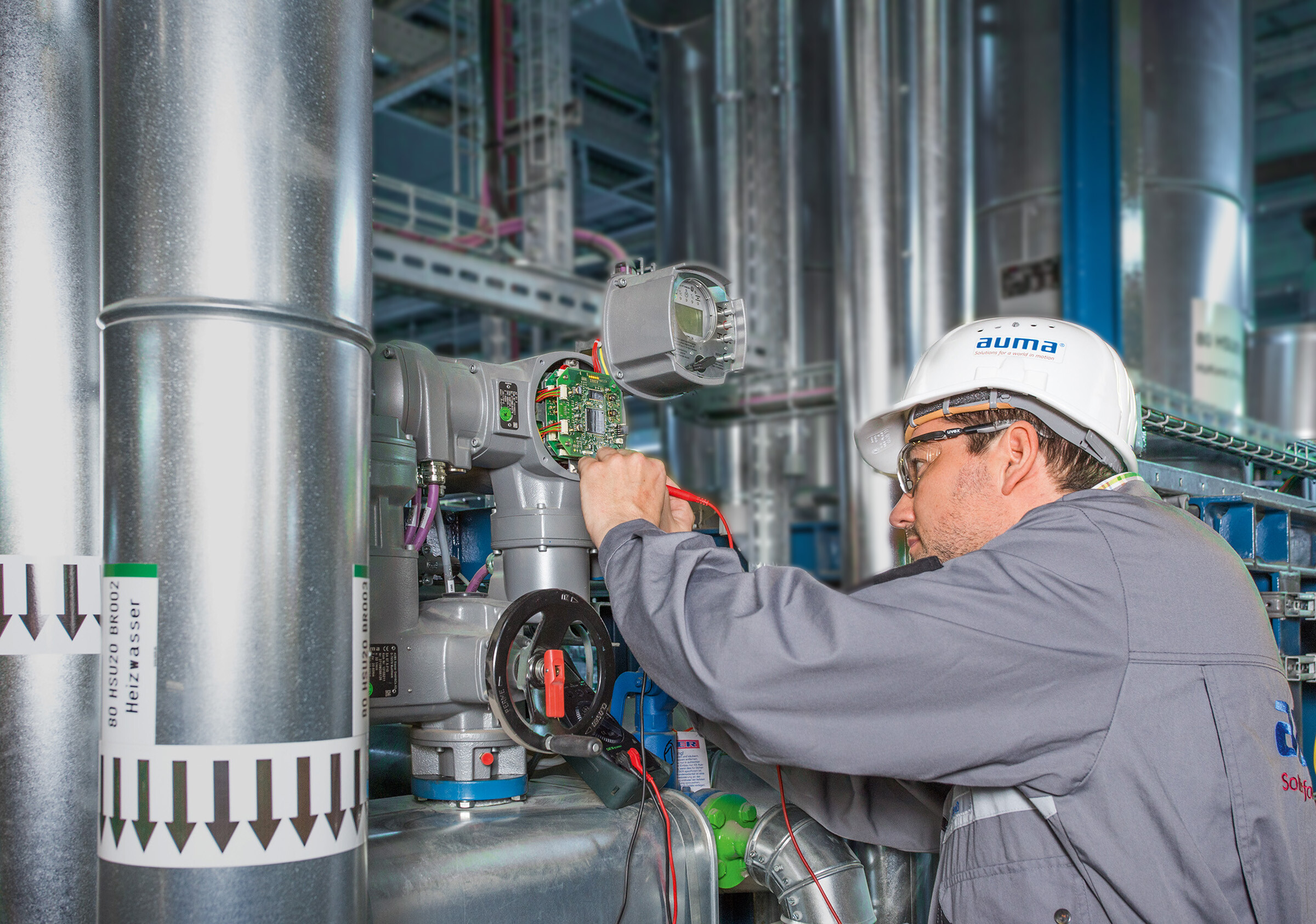The electric actuator for valve control spans two different disciplines: the ‘intelligence’ of managing analogue or digital control signals and feedback, and the creation of ‘brute force’ using linear or rotary motion to open / close different valve types. These two disciplines are generally considered separately throughout the life of the actuator, whether it be in the initial design stage of the controls, or the skill requirements for plant installers and maintenance teams.
AUMA Actuators Limited design solutions which reflect these different disciplines by creating a modular actuator solution in which the control head is separate from the motor gearbox drive unit, using a common interface to connect the two components. Using this interface throughout its product range means that different control heads, whether mechanical (AM Controls) or digital (AC Controls), can be bolted to different drive units. The control head can also be mounted at any one of four different orientations to provide greater design flexibility. This is also true of the electrical connector and control interface.
AUMA’s innovative design means that the same basic actuator can be built, or modified on site, to any one of 64 different build configurations to give maximum design flexibility. The control engineer can also mount the control head remotely from the drive unit using an umbilical cable up to 100 metres in length. This can be used to provide a safer solution to valve control systems which are used, for example, in underground locations.
Sophisticated control with variable speed actuation
Many applications can be satisfied with simple open / close functionality, however more demanding applications require a higher level of valve control. Water hammer poses a serious threat and valve seats suffer if driven hard to their end positions every time the valve is closed. AUMA’s range of variable speed actuators gives the control engineer the ability to change the speed of actuation at different points in the open / close cycle. Typically this means a valve can be closed rapidly through most of its range and then slowed as it nears its close position. This alleviates both water hammer problems and can extend the life of the valve seat. In addition, a fast close speed can be programmed for emergency shut down situations. This advanced control capability can even be used to provide near linear performance from lower cost non-linear valves, by using the multiple speed / set point capability of the variable speed actuator.
Solar powered systems
The innovative use of an inverter within the variable speed actuator means the control engineer now has an actuator which can provide high start-up torque with no peak start-up current and low overall power consumption. This means that cables can be specified for the nominal current and remote solar powered applications are a reality.
Reducing system costs at the design stage
Typical control systems contain many devices, including level or flow sensors, which all need to communicate with the master control system. Wiring and device costs can be reduced at the design stage by using the in-built capability of the AUMA actuator to digitise analogue signals and feed them back using the fieldbus communication link. This offers considerable savings including segment couplers, protectors and reduced wiring.
An interface for AC .2 actuator controls is also available, allowing AUMA actuators to be integrated into PROFINET networks, a second Ethernet-based networking option alongside Modbus TCP/IP. Meeting the requirements of PROFINET specification 2.3 and Conformance Class B, rates of up to 100Mbit/s are possible and installation and commissioning are made straightforward thanks to features like automatic address assignment.
AUMA actuators with PROFINET can be identified and addressed by device name or IP address from any point on the network. An integrated web server allows swift and easy performance of connection tests, status requests and fault diagnostics. All operation commands and feedback signals offered by the Profibus DP protocol are available to AC actuator controls thanks to the standardised device description.
Contact details:
E: mail@auma.co.uk
T: 01275 871141


